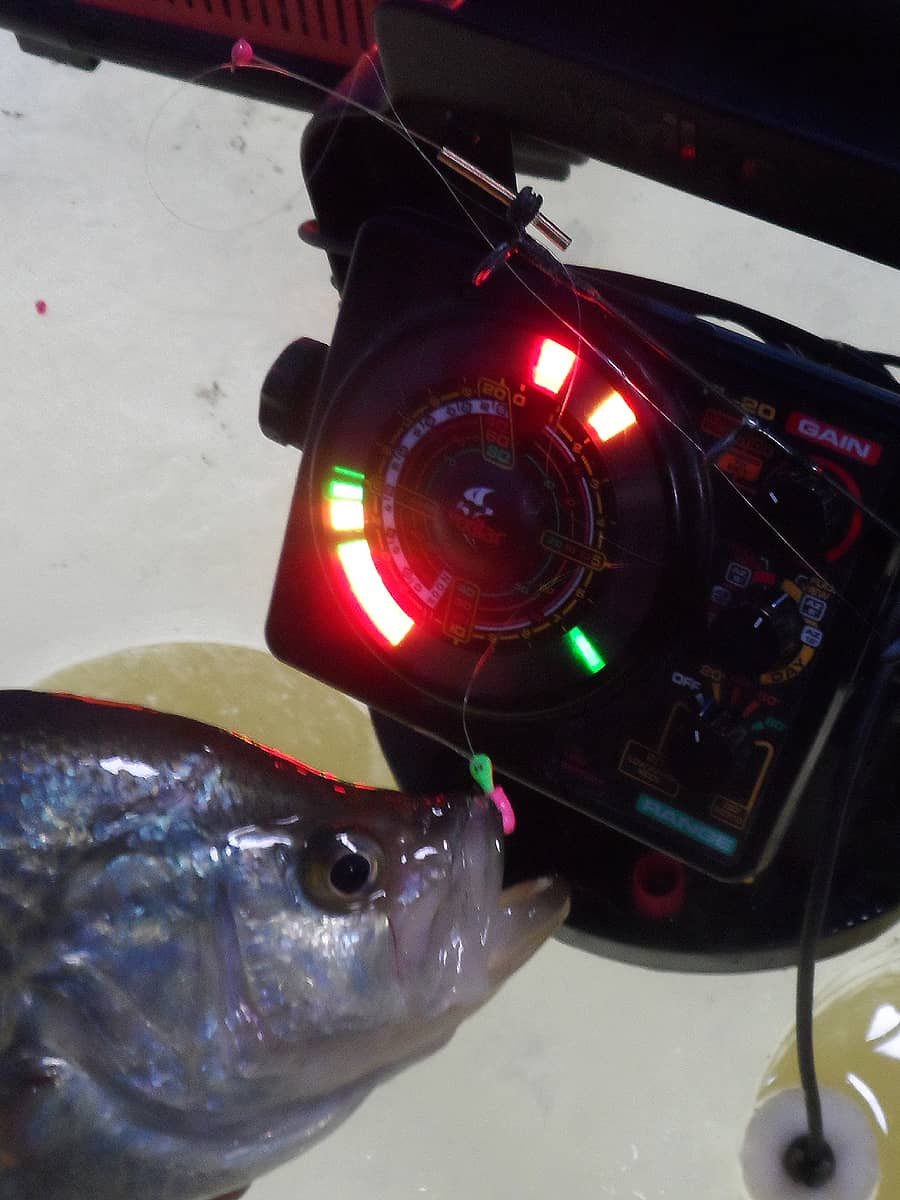
Panfish such as crappies and bluegills often require a bit of finesse to detect their inhale-style takes of ice fishing offerings, especially at mid-ice. Utilizing a spring bobber on the end of a favorite ice rod will help detect those subtle bites. Simonson Photo
By Nick Simonson
Sometimes it happens so fast my eyes can barely pick it up. The jump of a spring bobber or that slight lift of the brightly colored drop of glue at the end of the wire indicator which signals a take from a fish below – usually a panfish like a perch, crappie or bluegill – is one of the most exciting moments on the ice. Like the buildup to the big game consisting of two weeks of pregame highlights, interviews and in- depth analysis of the star quarterbacks’ meal prep; watching a fish rise on the sonar screen and then transitioning my gaze to the end of my rod for the action to commence provides amazing anticipation in the outdoors.
With all the new technology available to ice anglers winter after winter, the most basic still remains the most effective at picking up bites when conditions get tougher or the species of fish requires a little bit more of an edge to detect their take. In post-frontal conditions, popular panfish like perch and crappies will fussily tap a bait in a way that can’t be detected on many rod tips and would barely move a bobber floating in a hole. Bluegills too, with their amazing ability to suck in a small jig baited with a maggot and spit it out in a split second, frustrate most any other detection option, but not a spring bobber.
Sure, there are other ways of detecting those minute bites. Threading a small button in between eyelets and watching for its movement was a long-held ice anglers’ secret prior to spring bobbers. Carefully observing a slip float or foam bobber in the hole as fish move through, and tightening things up for a hookset at the slightest movement can often result in a connection. Even ungloving a hand and laying an index finger across the blank of a sensitive ice rod was better than nothing when trying to detect those super light bites. But all of them pale in comparison to using a spring bobber.
Whether built into a specific style of rod, or available as an attachment that can be added to the end of a chosen model, spring bobbers help anglers stay on top of the action, no matter how hard it might be to detect. They can be slipped over the final eyelet, clipped on, or with some DIY spirit at home, glued or shrink wrapped in place. I’ve even gone so far as to meticulously wrap two layers of bright rod- building thread around the connection point and then lacquer it into place to add a little more visibility in low light conditions and make the transition a bit more aesthetically pleasing.
Additionally, spring bobbers can help provide unique action when it comes to working smaller baits under the ice. The slight bend in the wire creates a smaller jump in the lure, mimicking the slight, pulsing movements of underwater insects, worms and other creatures that panfish eat. Simply tapping the rod blank with the tip of a finger will cause the miniscule motion in the spring, which in turn is transferred down the line to the jig below. If the bait is properly arranged, the tail of a maggot or waxworm will gently kick and wiggle with that movement of the spring, thus providing an even greater advantage beyond bite detection.
As kickoff for the big game approaches, signaling that the heart of midwinter and often more
challenging fishing is upon us as well, keep a well-tuned spring bobber rod at the ready for those times that fish require more finesse. The added bite detection will result in more hook ups, and other advantages resulting from the subtle action the attachment can provide to help bring fish in and convert those strikes…in our outdoors.
